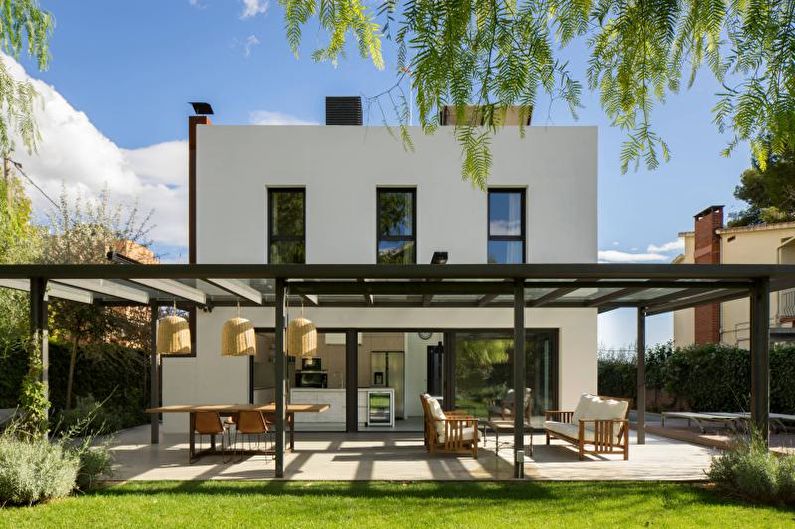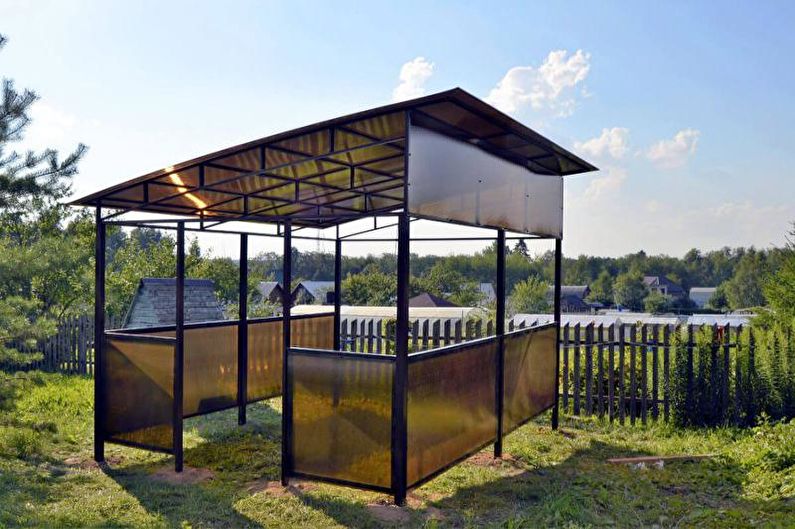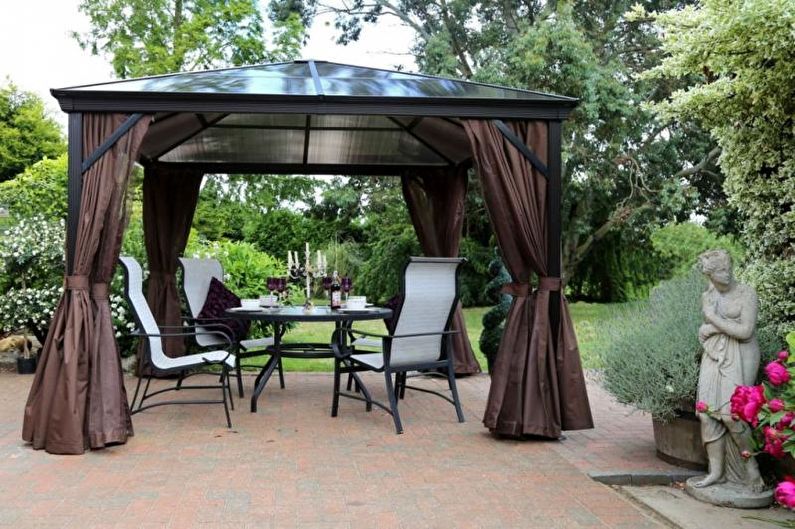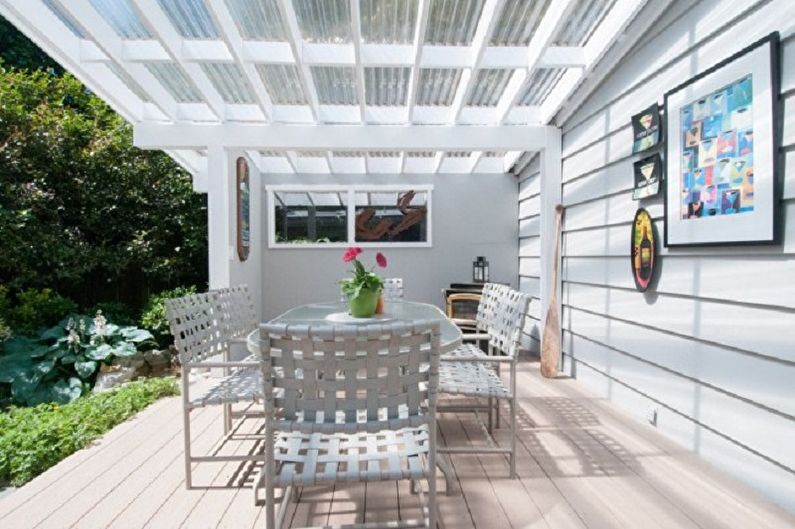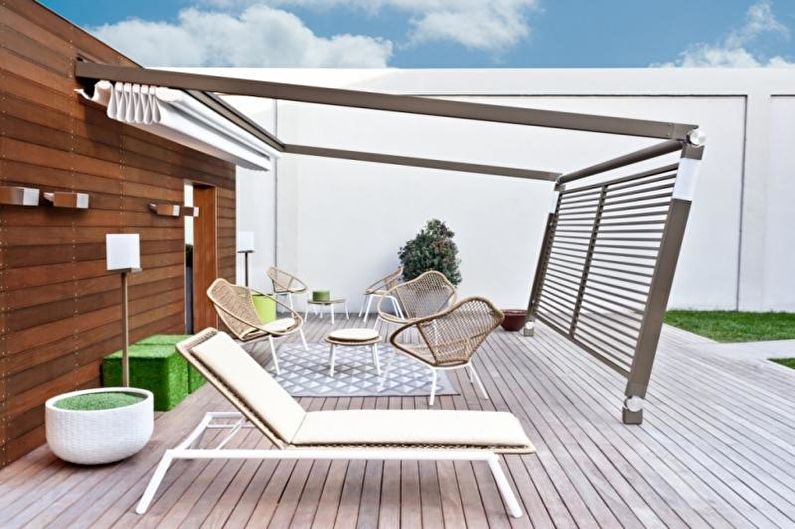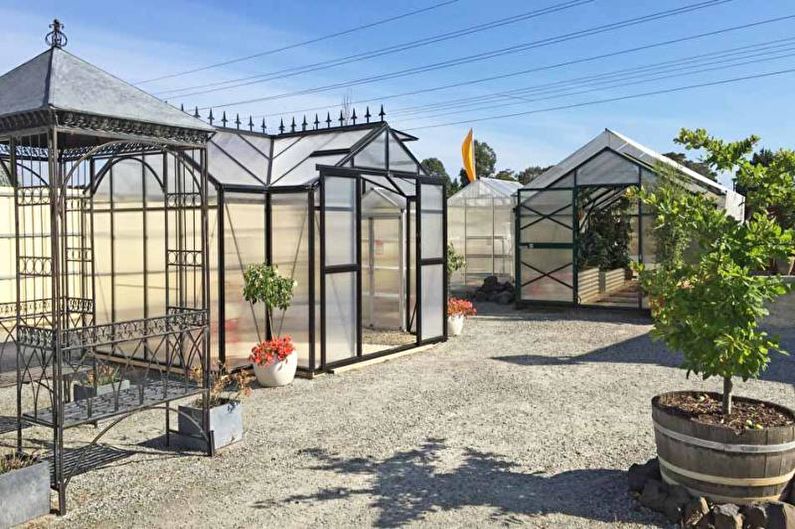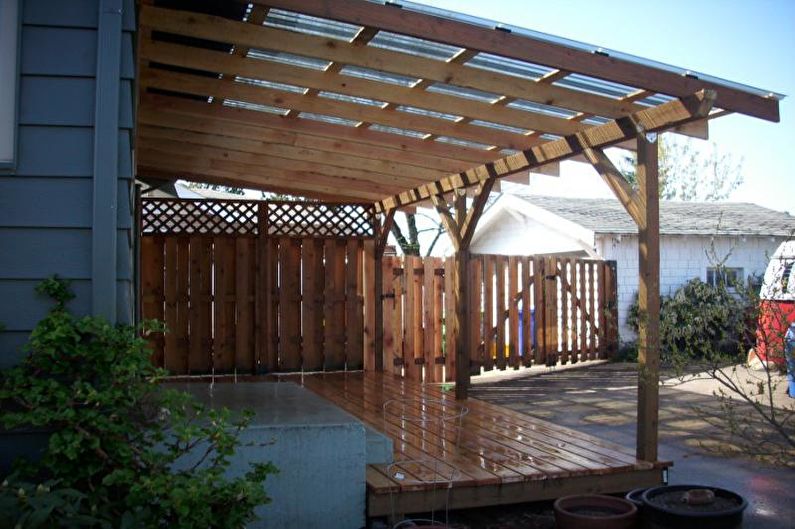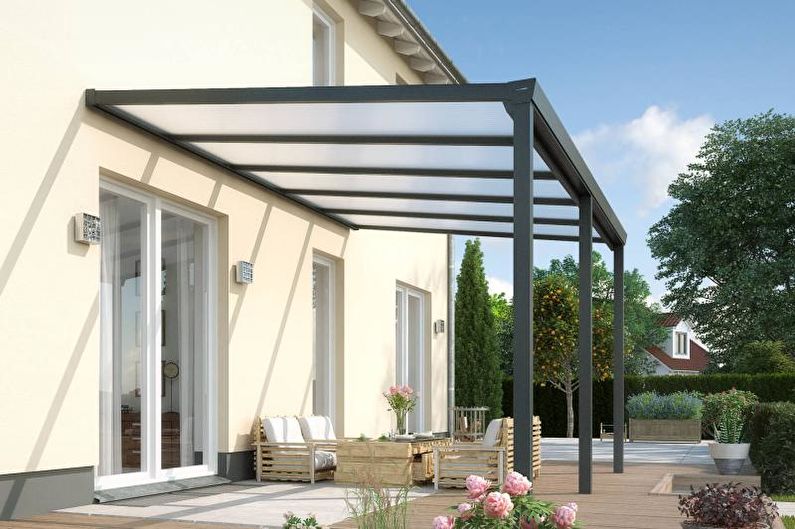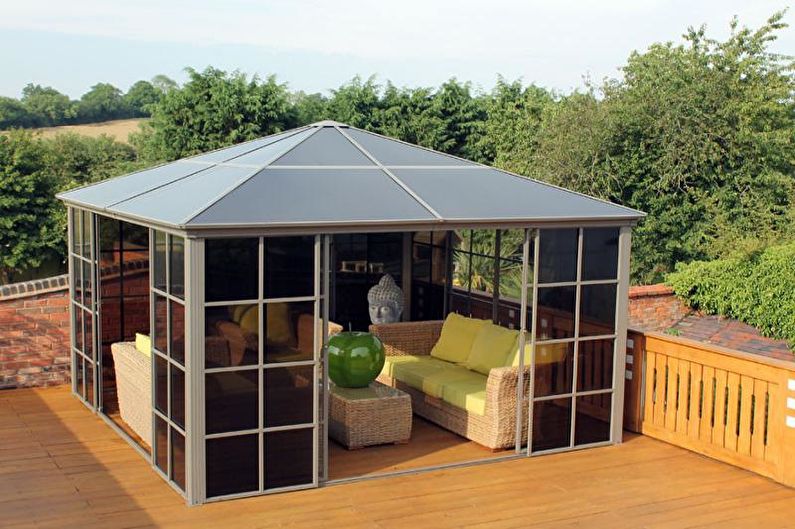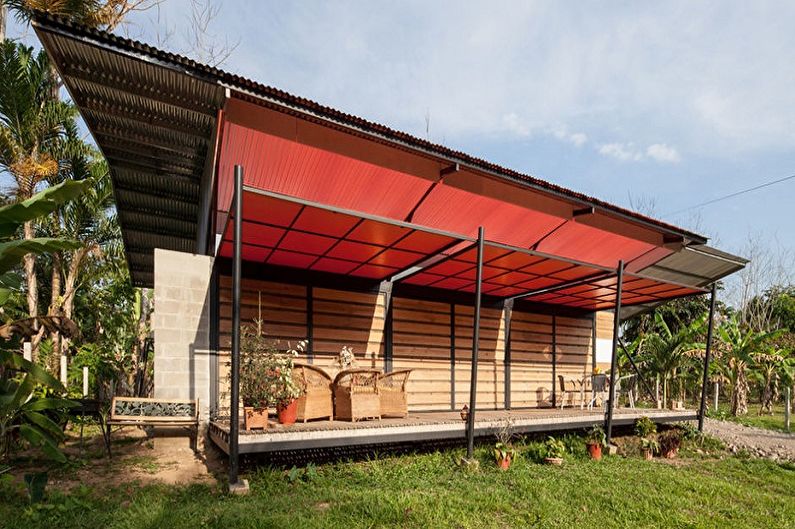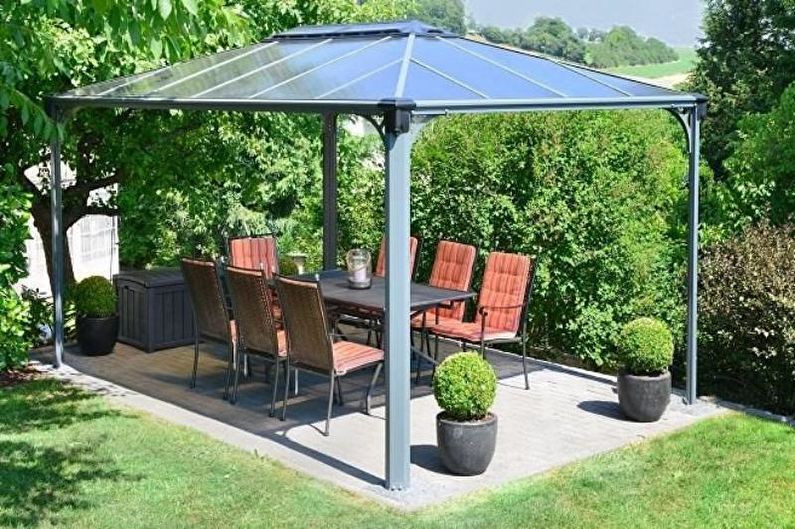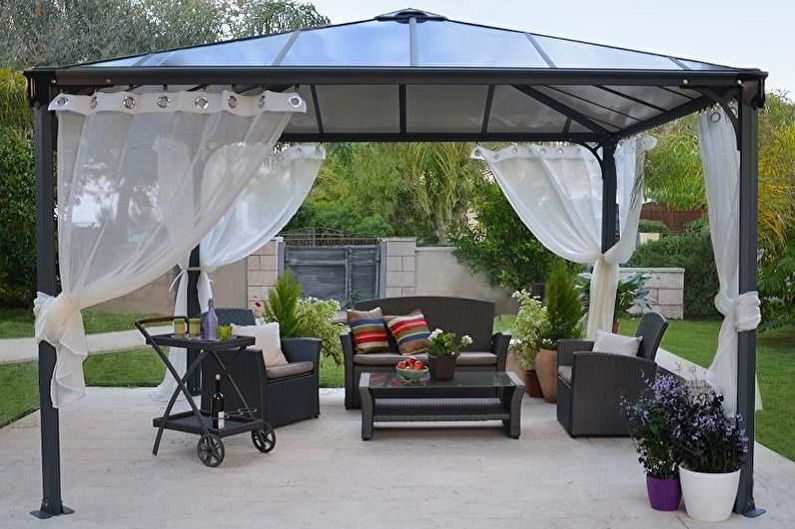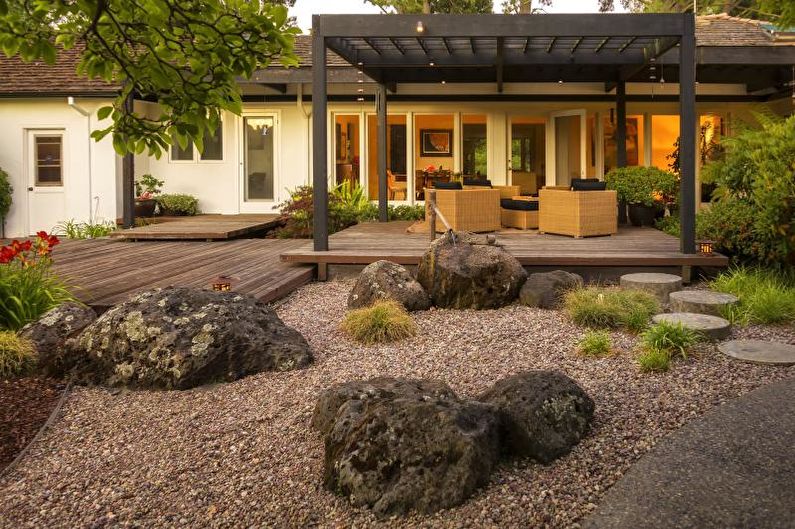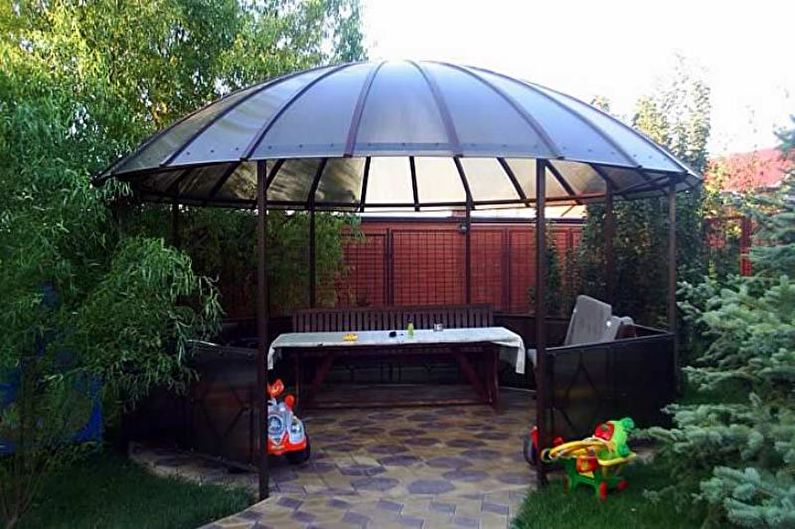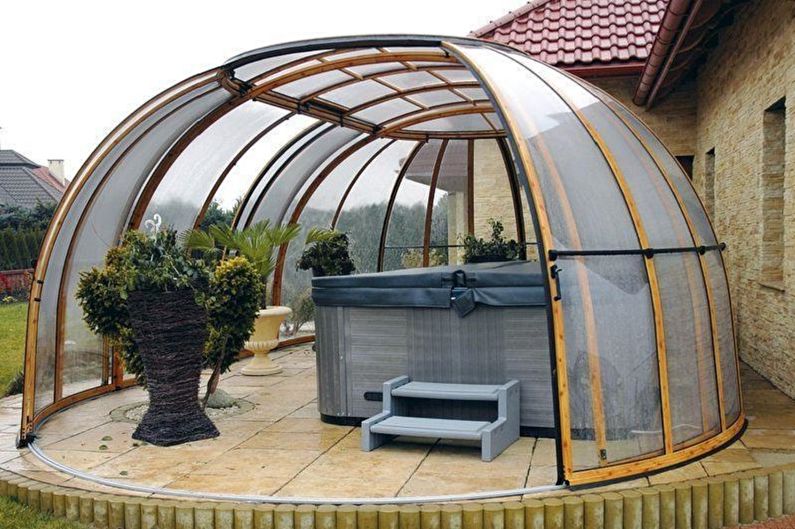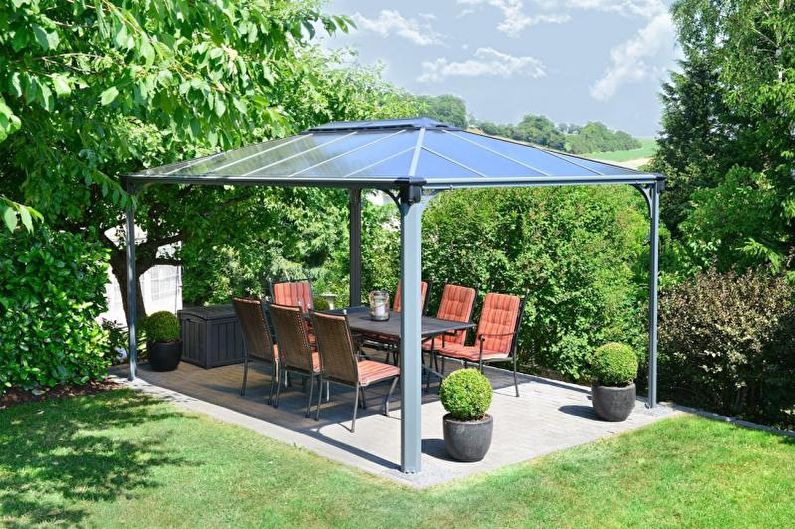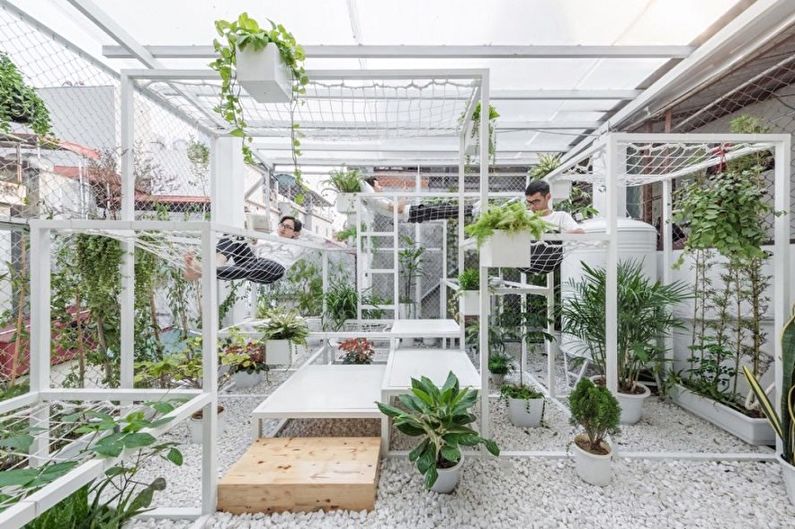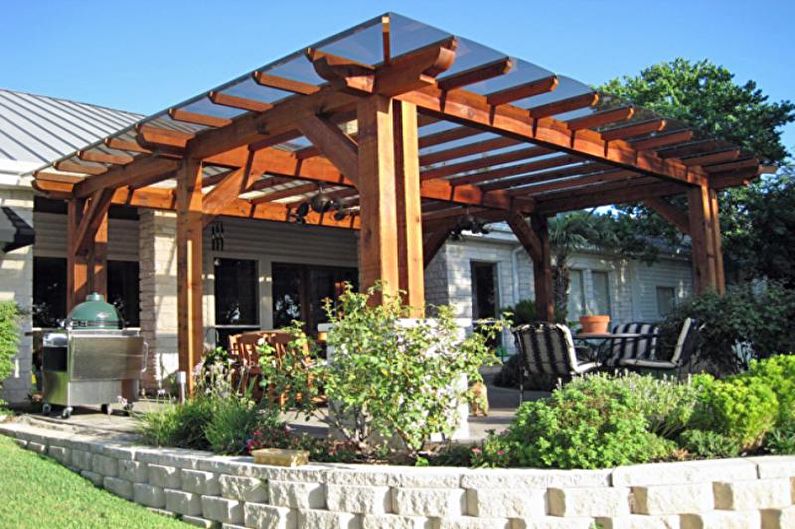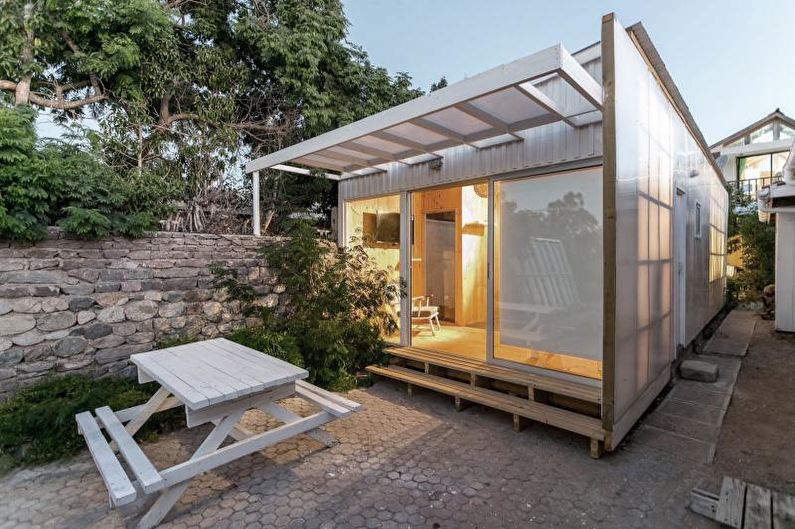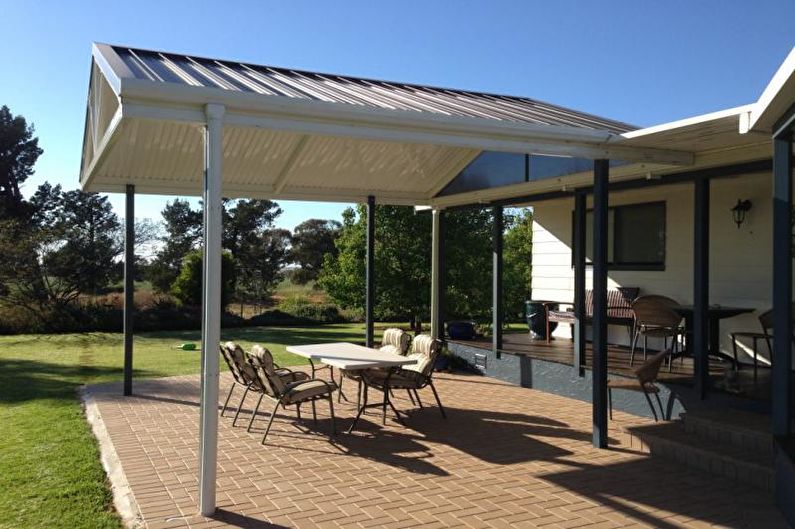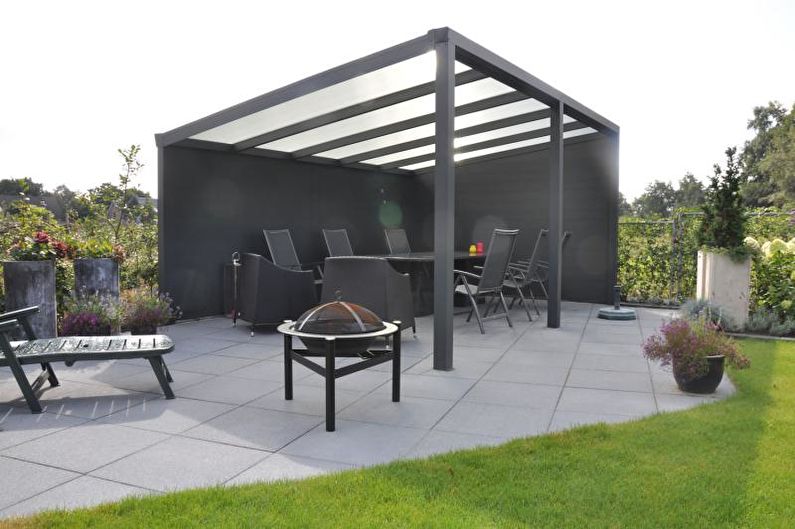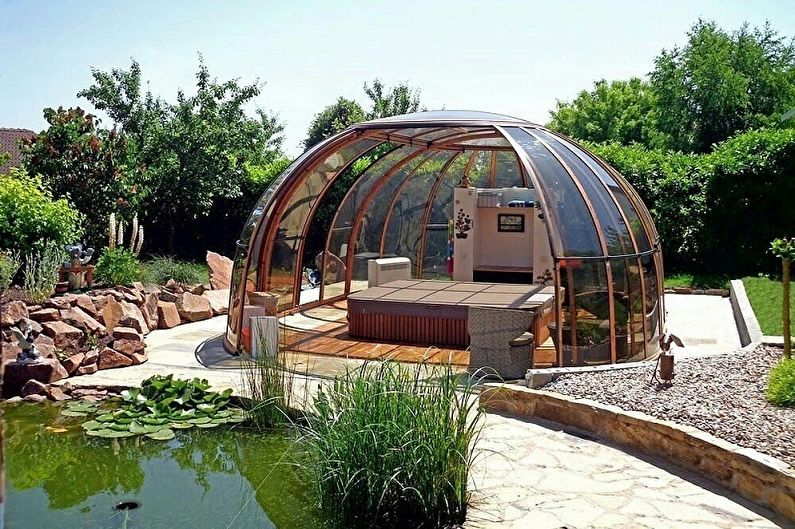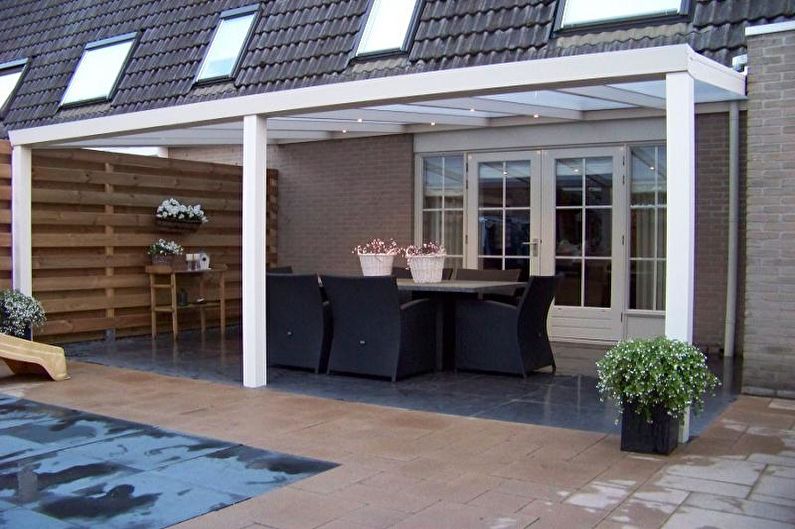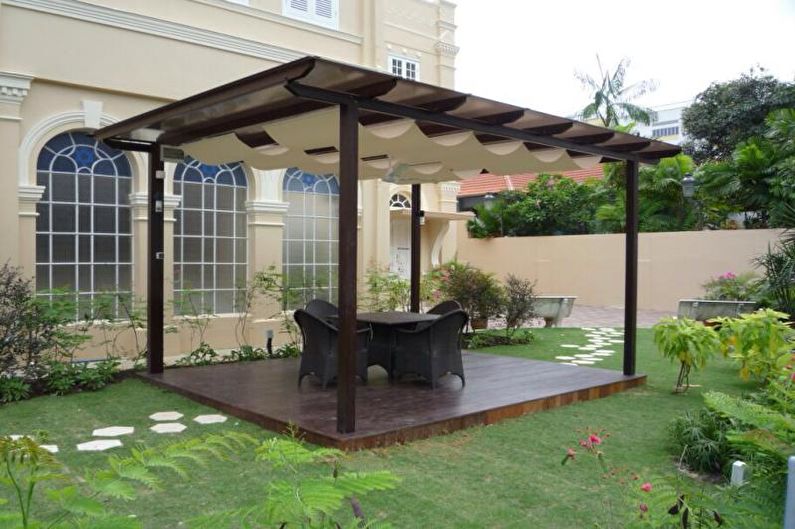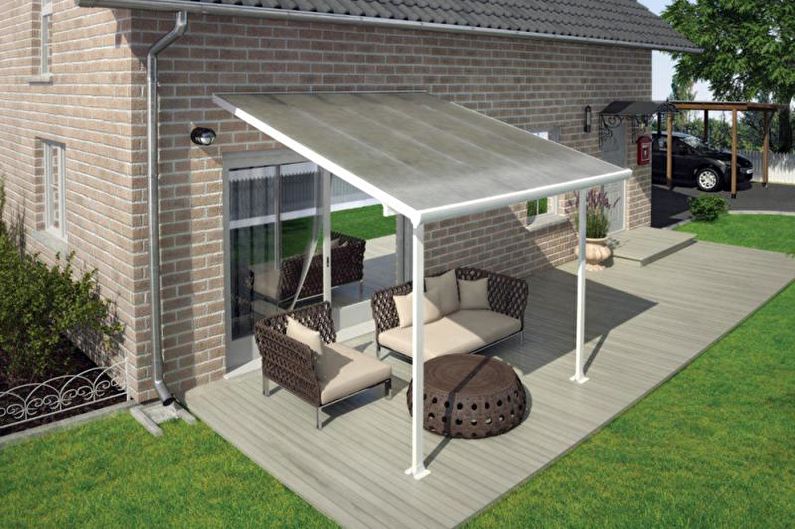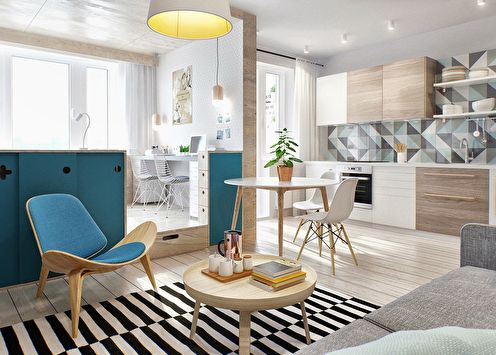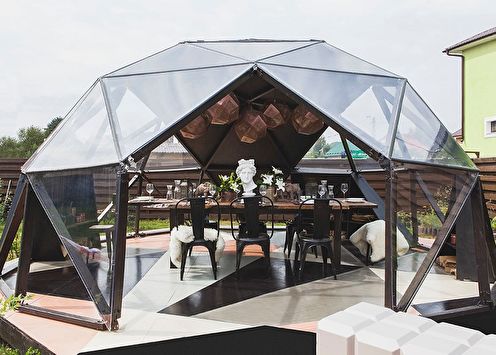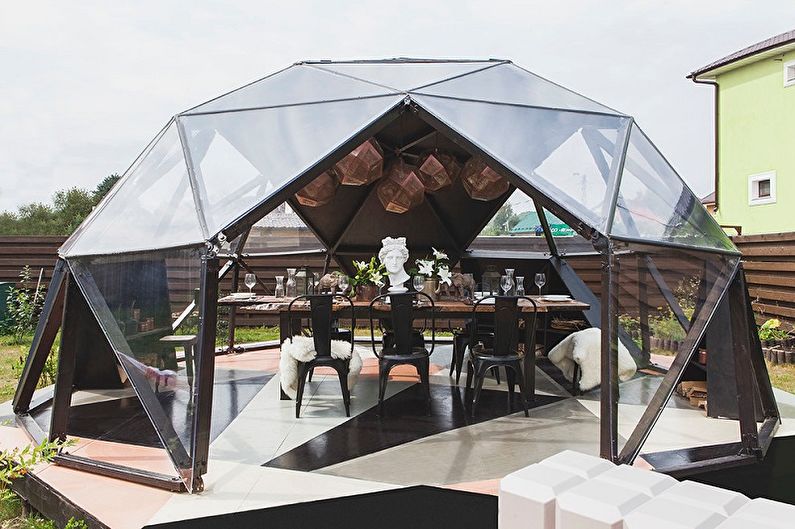
If you are a happy owner of a private house, then you probably thought about a separate recreation area. In this case, the gazebo is a great choice. Such structures can be made of polycarbonate, which is distinguished not only by aesthetic appeal, but also by durability. But first things first.
Polycarbonate Specifications
Pergolas made of this material look very easy, one might even say it is weightless, but in reality it is a rather reliable and strong structure. The lion's share of the strength of such structures falls on the characteristics of polycarbonate - perhaps the most durable of transparent building surfaces. From the huge list of positive factors, the following should be highlighted:
Low weight - applying this coating to the roof of your gazebo, you will forget about laying a powerful and bulky foundation, as well as installing solid supports and supporting structures;
Impact resistance - polycarbonate is hundreds of times stronger than glass, and several times superior to plastic in this indicator. With proper installation, he is not afraid of even a fairly large hail;
Convenience in installation is really a technological material, it is easy to cut, fasten, drill and bend it. This will save you a lot of time and effort;
UV protection - to increase this indicator to the maximum, it is enough to purchase a special coating or polycarbonate with already applied protection. You will protect yourself from scorching rays, while transparency will remain at a decent level;
Resistance to weather changes - polycarbonate is not afraid of snow and rain, does not rot and mold, tolerates even very strong temperature jumps (within 160 C);
Safety - the material does not burn, and if you manage to break it, then its fragments will not be as dangerous as in the case of glass.
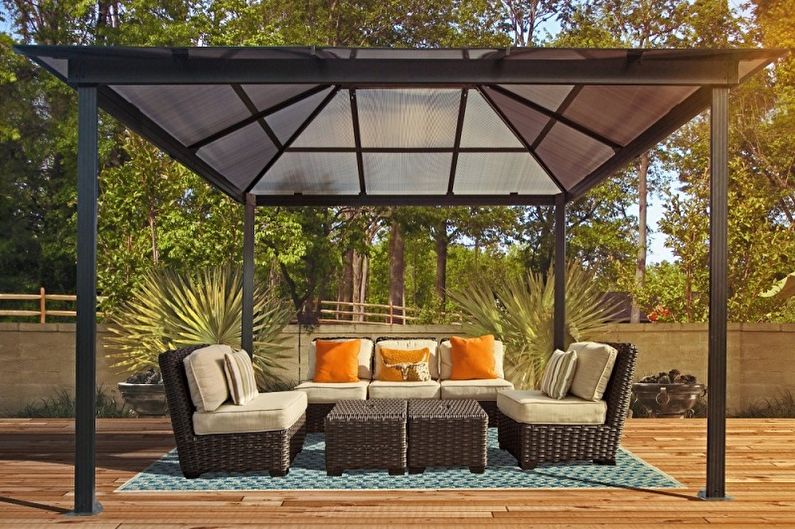
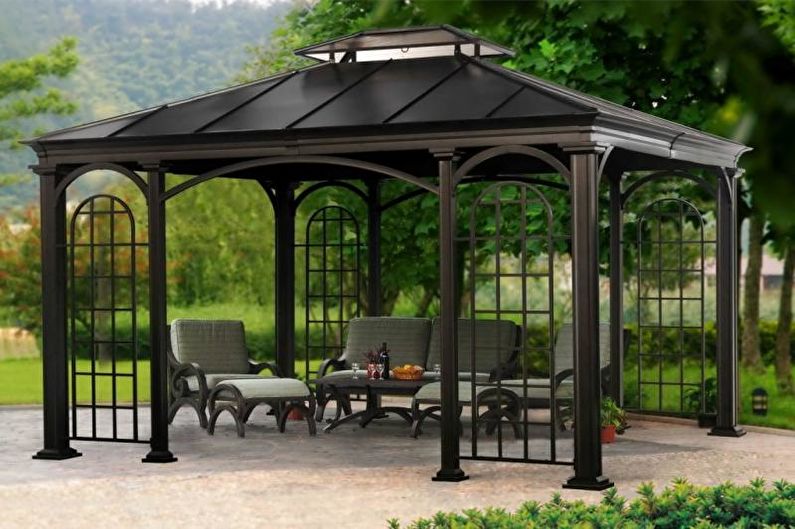
Advantages of Polycarbonate Arbors
You must admit that polycarbonate is not the first material that comes to mind when remembering arbors, even despite its excellent technical qualities. However, it is worth considering for this type of structure:
- Such indicators as flexibility and plasticity will be able to turn your mind about the configuration of the building for recreation, its appearance and ability to fit into modern design;
- Due to the low weight of the building material, you can build a structure that can be moved from one location to another, so you get a truly mobile canopy. At the end of the summer season, just transfer the gazebo to shelter;
- Polycarbonate buildings look easy and transparent, which is especially important for small areas - they do not clutter up the space and do not become an obstacle for exploring the territory;
- The honeycomb design guarantees the soundproofing properties of the material - strong wind or rain will not make you raise your voice when talking with loved ones;
- Polycarbonate retains heat better than glass, and you will feel comfortable even in winter, of course, provided that the room is heated;
“Among other things, it is very easy to look after this gazebo - completing the design with a metal frame, you will be sure that the repair will be needed very soon.
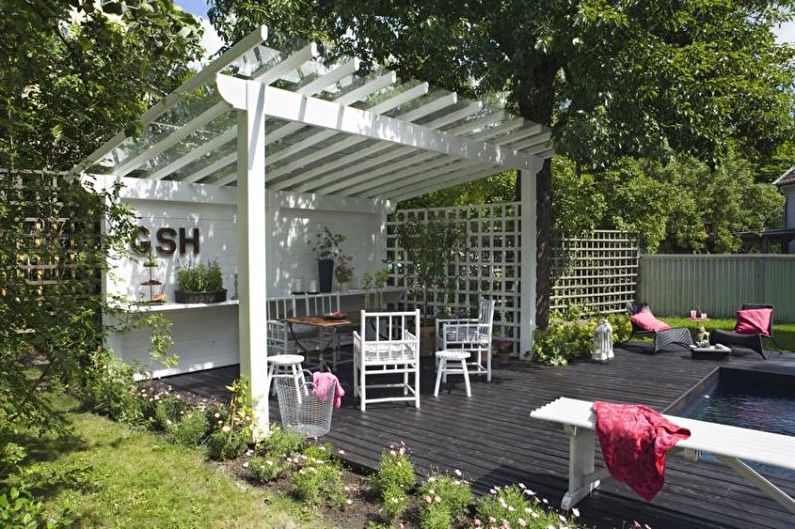
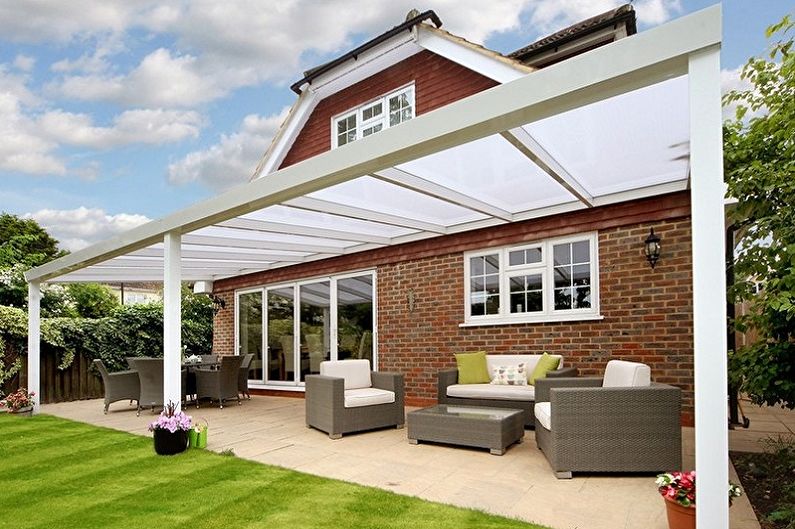
Cellular and monolithic polycarbonate
Today in the construction market you can find two types of material - monolithic and cellular. The first variety allows you to get a very attractive transparent structure. Outwardly, such polycarbonate is similar to glass, while it is not so heavy and fragile.You can choose a ribbed or smooth texture of the material, depending on your own preferences.
Such arbors are beautiful, but quite expensive, so they are infrequent. Please also note that if you want to make a roof of such material, be sure to buy options with a thickness of at least 0.5 cm.
Cellular modifications are distinguished by a good ratio of cost and quality characteristics. They are not as beautiful as monolithic surfaces, but more practical, cheaper and lighter.
For a gazebo, choose three- or two-layer materials - depending on the quality characteristics, they can last from 20 to 50 years. Suitable honeycomb thicknesses are 0.8 cm or more.

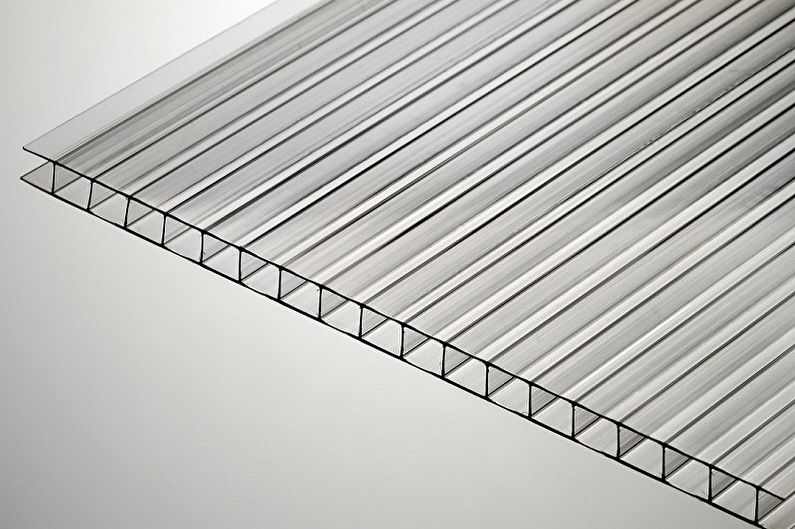
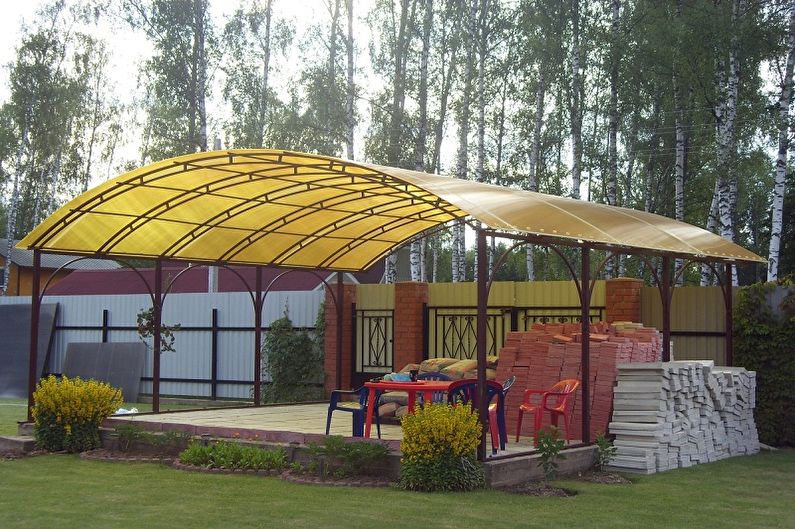
Types of arbors made of polycarbonate
To make the right choice of gazebo, let's look at what options we have in the case of polycarbonate buildings. So, arbors can vary based on:
Their shapes - set the design in the form of a polygon, rectangle, circle or oval;
Functional purpose - structures can serve as a place for outdoor recreation or act as a decorative element of the garden, moreover, the building can be additionally equipped with barbecue;
Transfer options - as previously stated, the gazebo can be mobile or stationary;
Type of construction - choose from enclosed or enclosed, difficultly composed constructions or simple awnings.
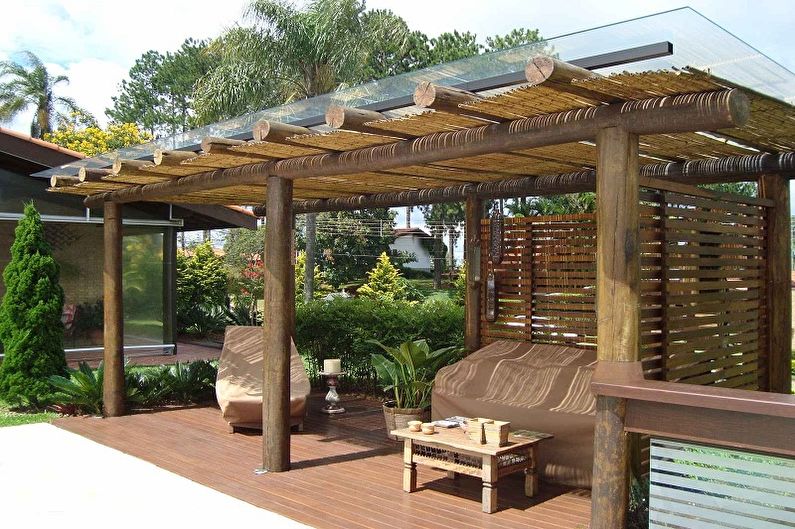

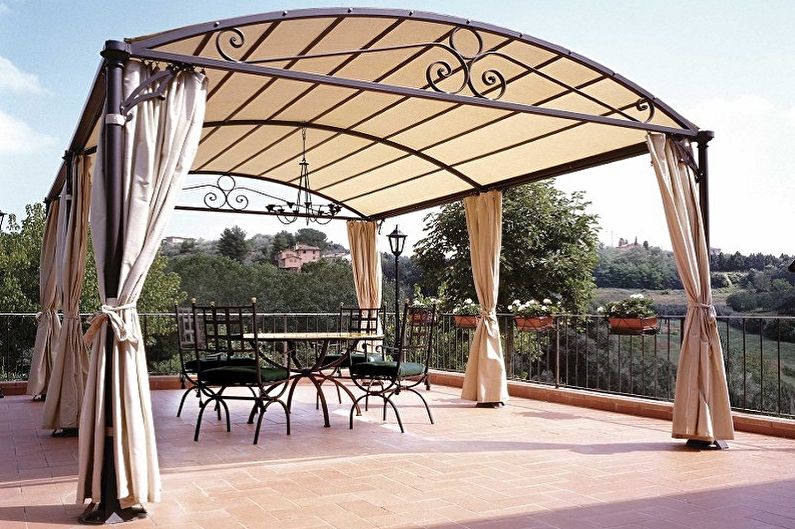
Subtleties of installation of an arbor
If, according to your idea, the arbor will be massive and large, and the combination of heavy wood, brick and polycarbonate sheets will serve as the basis, then the construction of the foundation is a necessary step. For semi-closed arbors, a strip foundation or a columnar version is quite suitable. For larger, massive structures it is better to fill in a monolithic base. In addition, if you decide to install a fireplace, tandoor or barbecue, then for them you need to lay out a heat-resistant platform separately.
For light buildings, the installation of load-bearing pipes, which will take on the weight of the entire structure, is quite enough. This is a very reliable and uncomplicated basis for a gazebo made of polycarbonate.
Without a reliable and strong frame it is difficult to get a quality gazebo. The following materials are suitable for manufacturing:
Corners or metal profiles. To assemble the base of the gazebo from this material, you will need skills in handling the welding machine. The undoubted advantage of such a building is its strength and undeniable durability, the disadvantages include the cost and complex construction of the structure.
Wood. The wooden base for the polycarbonate gazebo is quite simple to assemble with your own hands. This is a fairly inexpensive solution that will delight you with its appearance, environmental friendliness and harmony with the environment. But do not forget that the tree requires periodic processing and care.
When cutting and fixing polycarbonate sheets, be guided by the following aspects:
1) Transparent varieties are the least susceptible to expansion and heating, and therefore, if you prefer this material for walling, select a transparent product;
2) So that the sheet does not begin to crumble, it is better to cut it with a tool with small teeth;
3) Make holes between the ribs, backing off from the edge by at least 3 cm;
4) For safety reasons, install in calm weather;
5) Fasten cell polycarbonate with thermowells;
6) Treat the joints on the roof with silicone.
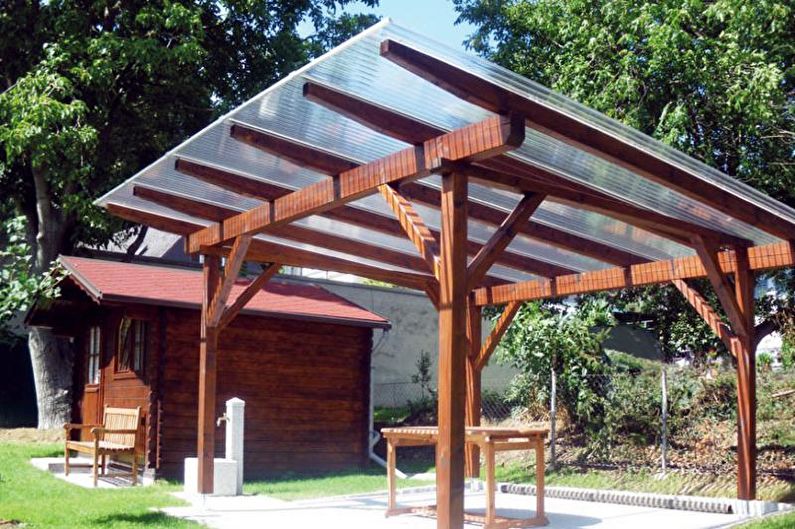
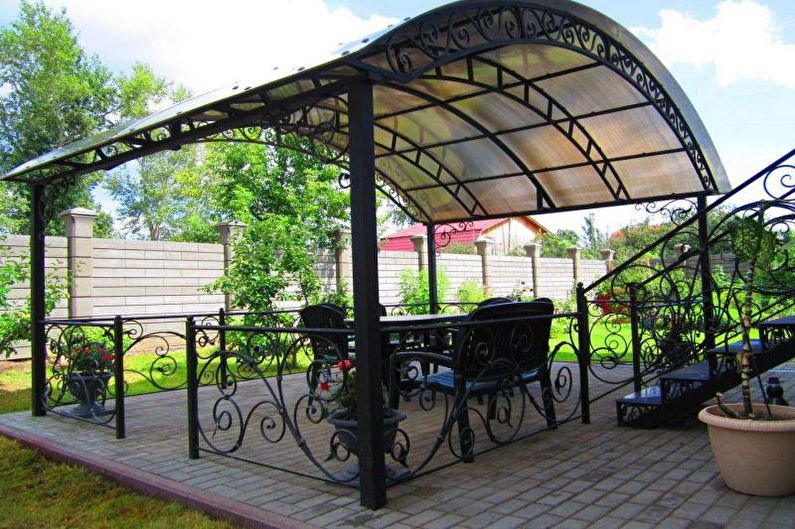
How to make a polycarbonate gazebo with your own hands
A polycarbonate gazebo is best built using a combination of materials. We will give an example of the construction of a structure with a metal frame. Metal will provide strength and durability of the structure. Supports will be mounted from corners and pipes.
The best location for the gazebo is a flat surface with deep underground water.If you will place the building in a lowland, take care of a serious foundation that will protect the structure from flooding.
So, first mark the area, leaving space for the frame. Next, dig in the recesses, with a depth of 1 m and not more than 10 cm in diameter. Their number should be indicated in the plan. Lay and compact 20 cm of crushed stone or sand in pits.
Set the pipes according to the level and from the timber, make struts for them, concreted. After the concrete has hardened, proceed to the piping below.
Weld the metal corners to the pipes, and on top of them, fix the wooden logs with bolts. Weld parts for the upper trim.
Build the roof frame on the ground, and after the finished construction, fix it at the top.
Treat all metal elements with a special anti-corrosion agent.
After the procedures, perform flooring - it can be created from tiles after pouring screed or using boards.
Cut the polycarbonate sheets and fix them with screws and thermowells. Apply sealant to the joints.
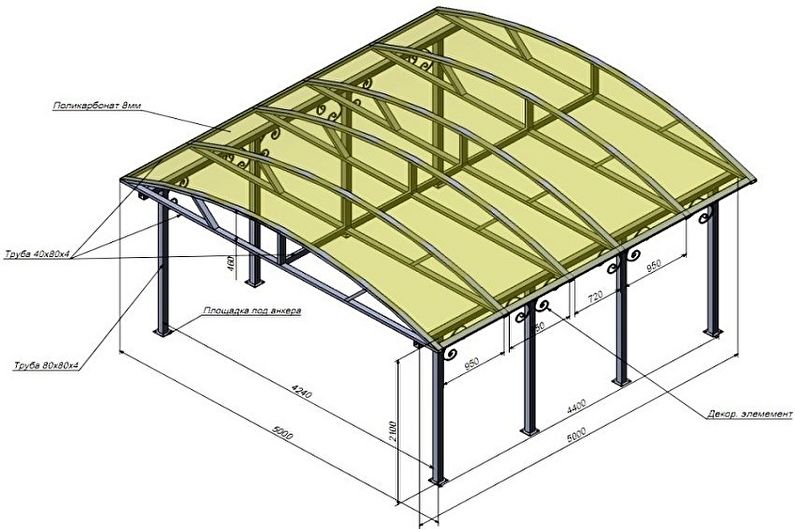
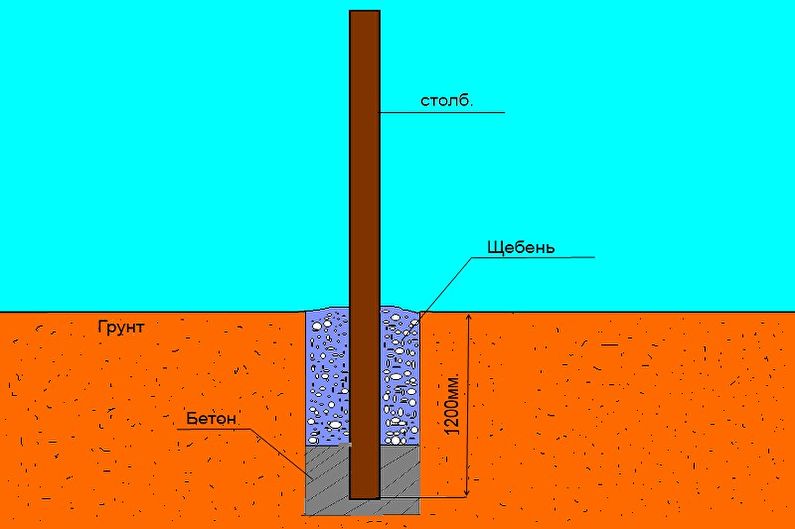
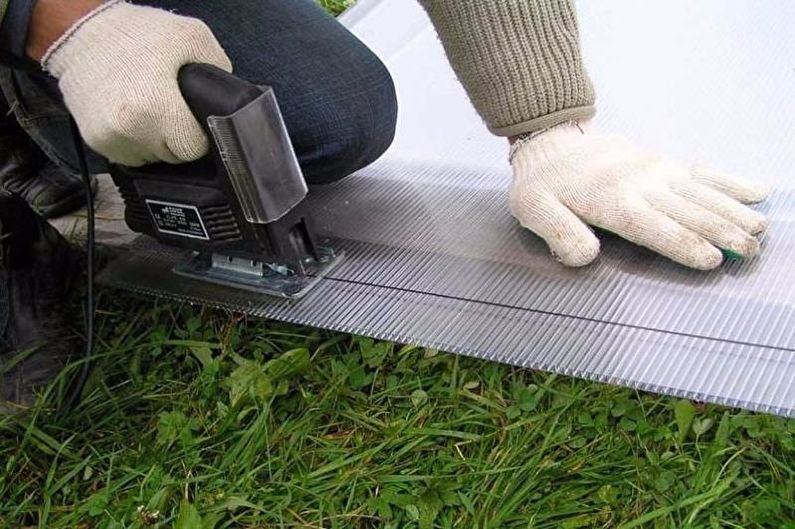
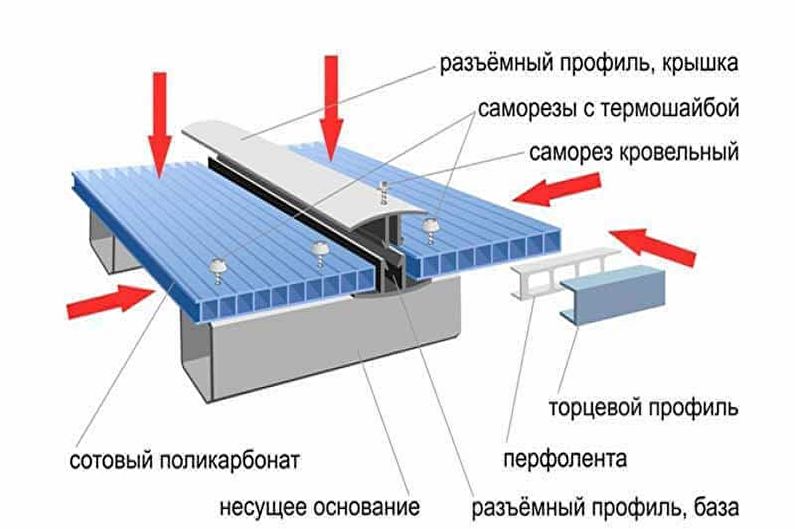
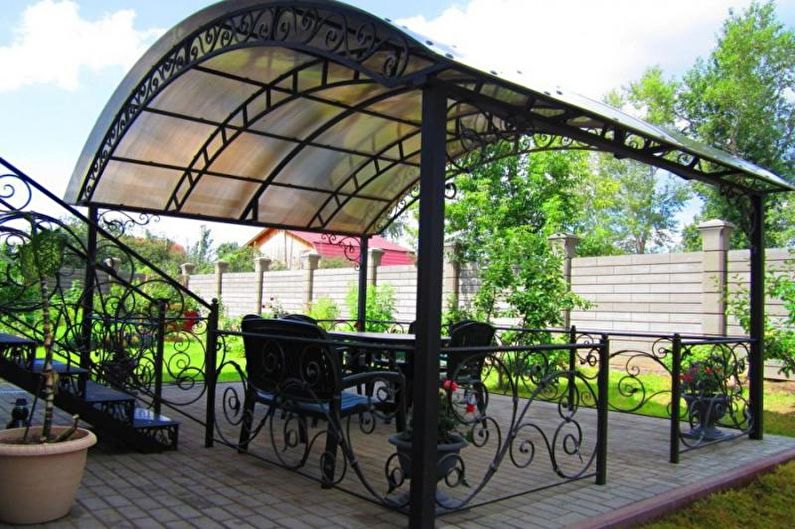
Polycarbonate gazebo with barbecue
Want a covered lounge area with barbecue or grill? Great idea! But before you run to the store for such a device, you should take care of fire safety.
First of all, note that the place for the furnace must be equipped with a foundation of concrete, flooded with a thickness of at least 40 cm. Place the gazebo away from the neighbors, other buildings, as well as from bushes and trees. The optimal distance is 5 m.
As finishing materials, use refractory materials: tile, brick, stone. Install the selected type of furnace before installing polycarbonate sheets.
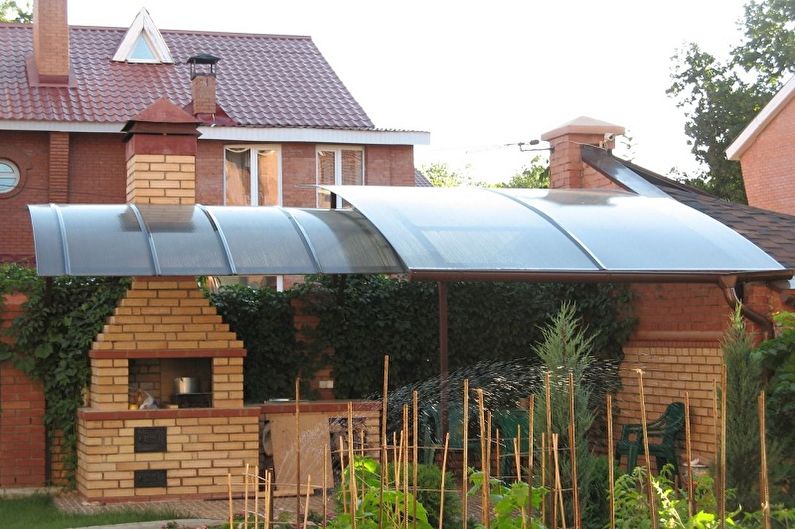
Polycarbonate arbors - photo
Polycarbonate gazebos attract a variety of shapes. We have collected photo ideas that will demonstrate the diversity of designs, as well as help you choose the best option for you. Enjoy watching!
